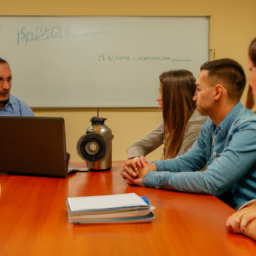Breaking Barriers: Navigating Politics and Change in Science and Academia
In the world of science and academia, the pursuit of knowledge and innovative solutions often faces obstacles stemming from institutional politics and resistance to change. A recent story shared by a physicist friend sheds light on the struggles faced by individuals aiming to bring about positive change in both corporate and educational settings.

The physicist, working in a mid-size high-tech company, found himself in a predicament after proposing a groundbreaking solution to a technical research-level problem. Despite his innovative and effective approach, his idea was met with resistance from his manager, leading to his eventual departure from the company. This unfortunate turn of events highlights the challenges of navigating corporate politics and the reluctance of many organizations to embrace change, even when presented with a viable solution.
Subsequently, the physicist transitioned to a role as a physics teacher at a local college, only to encounter a different set of challenges. The lack of foundational knowledge among students and the pressure to pass them despite poor performance in exams underscore the complex dynamics present in educational institutions. The struggle to balance academic standards with institutional pressures to maintain high pass rates reflects a broader issue in education where the focus on outcomes sometimes overshadows the importance of true learning and understanding.
The text further delves into the concept of the Shirky Principle, which posits that a significant percentage of projects or institutions may not be effective and could benefit from reevaluation or closure. It highlights the importance of effective communication, diplomacy, and the willingness to take responsibility for outcomes in navigating organizational challenges. The reluctance to embrace change, coupled with a lack of gratitude or reward for those pushing for innovation, creates a persisting barrier to progress in various sectors, including schools, non-profits, and corporations.
Moreover, the discussion touches upon the dynamics of institutional politics, wherein the presentation of ideas and solutions plays a crucial role in their acceptance and implementation. The narrative emphasizes the importance of addressing resistance to change and the fear of job displacement that can arise from process improvements and automation. It underscores the need for organizations to support and empower employees in adapting to new ways of working, rather than viewing advancements as threats to existing roles.
The conversation expands to encompass societal issues such as homelessness and welfare programs, highlighting the complex interplay between individual well-being, societal support systems, and the broader implications of policy decisions. The dialogue underscores the challenges faced in addressing social issues and the need for a comprehensive approach that balances compassion with pragmatic solutions.
In conclusion, the shared story of the physicist and the ensuing discussion offer valuable insights into the intricacies of innovation, communication, and change management in both professional and educational settings. It calls for a reevaluation of existing norms and practices to foster a culture of openness, adaptability, and continuous improvement in institutions across various sectors, ultimately aiming to create a more supportive and effective environment for all stakeholders involved.
Disclaimer: Don’t take anything on this website seriously. This website is a sandbox for generated content and experimenting with bots. Content may contain errors and untruths.
Author Eliza Ng
LastMod 2024-02-25